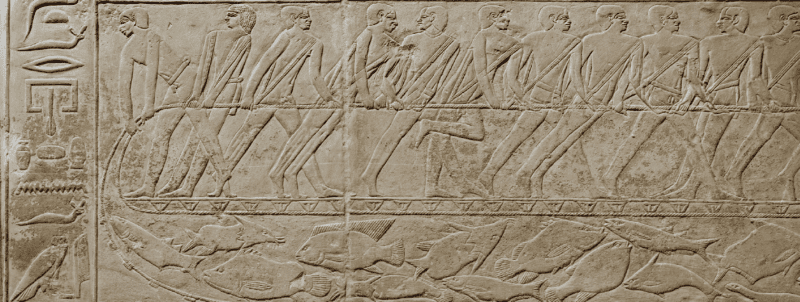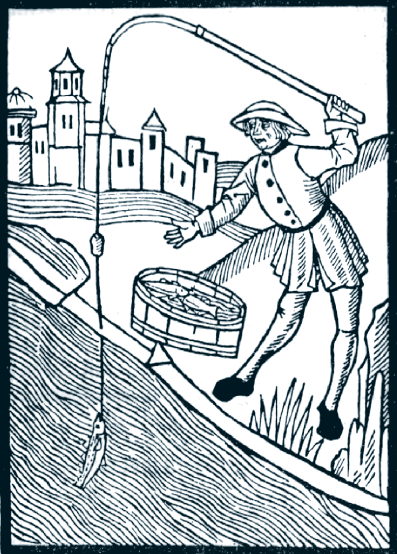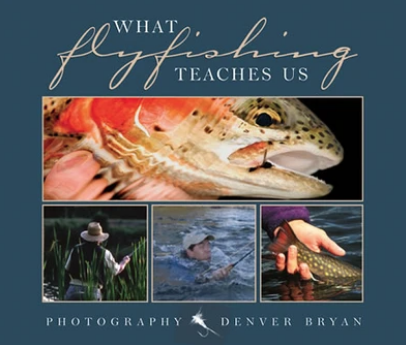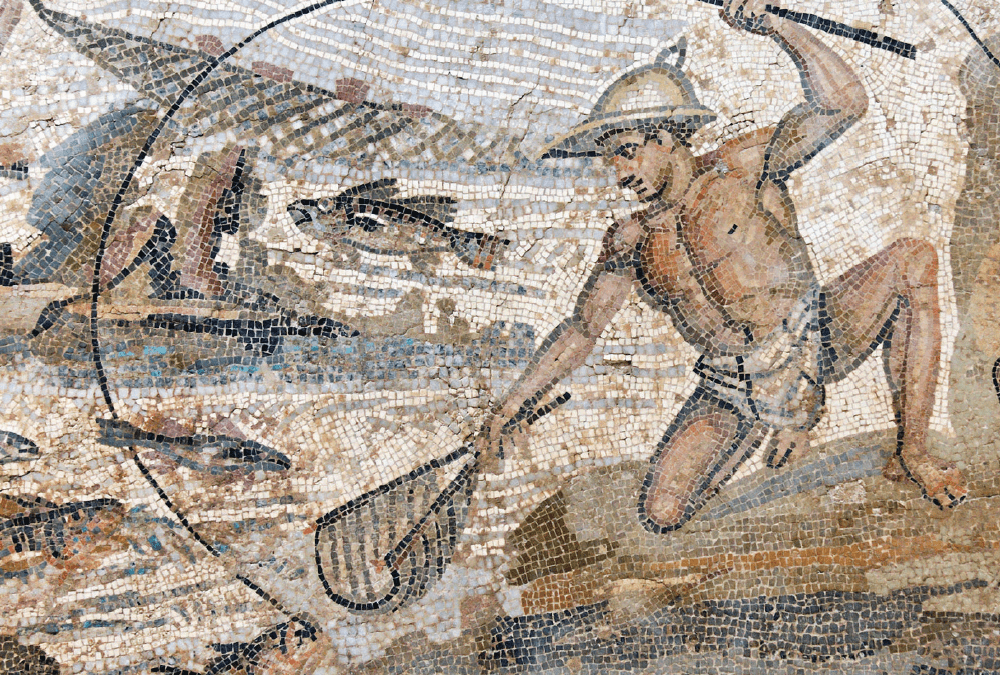Those who build a rod, fly or lure are participating in one of the world’s oldest professions.
The history of man as hunter is partially defined by the history of fishing; the history of fishing is intertwined with the invention and evolution of fishing tackle. Thus, in a very real sense, those who build a rod, fly or lure are participating in one of the world’s oldest professions.
Why build your own when you can buy ready-made? For one thing, it’s a great hobby to keep you occupied when weather or season keeps you off the water. You can also design and build a rod, lure or fly to your own taste and your own waters. Those are great reasons, but here’s my favorite: there is a particularly special satisfaction to be had from catching fish with tackle you’ve built yourself. It doesn’t necessarily require great skill or expensive tools – interest and patience are the two greatest requirements for both beginner and pro.
How did this all start? In the beginning there was the gorge…
Our ancestors confronted the same problems as today’s fishermen: Where are the fish? How do I hunt them? What type of bait should I use? Forty thousand years ago in the Upper Paleolithic Age, man created one of his earliest tools now called the “gorge”— the precursor of our fishhook. It was a piece of wood, bone or stone an inch or so in length, pointed at both ends and secured off-center to a line of some sort. The gorge was covered with various kinds of bait. When a fish swallowed the gorge, a pull on the line wedged it across the gullet of the fish, which could then be landed. From 7,500 to 3,000 years ago, Native Americans along our California coast were known to be fishing with gorge hook and line.
With the advent of metals came the metal hook. Attached to a handline of animal or vegetable matter, this became a method efficient only when used from a watercraft. Someone then figured out that if the line was attached to a “rod,” at first probably a stick or tree branch, it was possible to fish from a bank or shore.

This scene from an Egyptian tomb shows various methods of fishing, from the use of a simple line to the large-scale use of nets and baskets.
At some point in antiquity, fishing also became a sport. We have artistic renditions of Egyptians fishing with a rod and line around 2,000 BCE. Typically fishing from reed boats, they invented or used various kinds of tackle such as woven nets, harpoons and hook and line. By the 12th dynasty, metal hooks with barbs were being used.
Chinese writings from around the 4th century BCE record fishing with a silk line, a hook made from a needle and a bamboo rod with cooked rice as bait. References to fishing are also found in ancient Greek, Assyrian, Roman and Hebrew writings. For thousands of years, the fishing rod was short — maybe only a few feet long. The earliest account of a longer, multi-piece rod is in Roman writings from about the 4th century CE. Those Roman writings describe Macedonians catching trout on artificial flies and described how each fly was made. They used rods around six feet long with a line of similar length. To this day, one can see Roman mosaics showing fishing with rod and line.
Around the beginning of the Common Era, the Roman Martial (Marcus Valerius Martialis) wrote:
“Who has not seen the scarus rise, decoyed and killed by fraudful flies…”

A woodblock illustration from the Treatyse of Fyssshynge with an Angle, published in 1496. Notice what appears to be a float in the middle of his line.
The first detailed recorded use of an artificial fly was by the Roman Claudius Aelianus about 200 years later. He described the practice of Macedonian fishermen on the Astraeus River, “[They] have planned a snare for the fish, and get the better of them by their fisherman’s craft… They fasten red… wool round a hook, and fit on to the wool two feathers which grow under a cock’s wattles, and which in color are like wax. Their rod is six feet long, and their line is the same length. Then they throw their snare, and the fish, attracted and maddened by the color, comes straight at it, thinking from the pretty sight to gain a dainty mouthful; when, however, it opens its jaws, it is caught by the hook, and enjoys a bitter repast, a captive.”
The earliest British essay on sport fishing was published in 1496. Entitled Treatyse of Fyssshynge with an Angle, it was published in the second Boke of Seynt Albans, a collection on hawking, hunting and heraldry. This book, reprinted many times, was much read in the 16th century. It includes detailed information on fishing waters, the construction of rods and lines, and the use of natural baits and artificial flies. These activities were major interests of the nobility, and the publisher wanted to keep the book from “those who were not gentlemen, since their immoderation in angling might utterly destroy it.” And that very real pearl of wisdom brings us more or less to today.
If you have the inclination and a modicum of skill, custom fly tying and lure making provide the angler with a real competitive edge. You can tailor your creations and design them for the greatest effectiveness, and fish with lure or fly not sold in stores. If they don’t look professionally made, who cares — they will catch fish and that’s the bottom line. Once you determine what pattern works, you can build those to your heart’s content. And if you lose a few, so what?
Rod building is a little trickier, but still doable — even for those of us with limited mechanical abilities. It can be an artistic and creative venture with component and color choices combining to form your own magic fishing wand and the satisfaction of a job well done is priceless.
How to begin? Start out by sourcing information from the web, books, retailers, manufacturers — anywhere you can get it. Fishermen like to talk fishing, and tackle builders like to talk tackle building. I’ve never encountered anyone hiding proprietary secrets or tricks — the information is out there and easy to find. Have fun — and tight lines, my friends!
 Fly fishing is a noble sport whose avid practitioners learn the skills of finesse, observation and technique-and that would be great if it all stopped there. But fly fishing is more-oh so much more-than the stream side perfection of a mere handful of angling skills.
Fly fishing is a noble sport whose avid practitioners learn the skills of finesse, observation and technique-and that would be great if it all stopped there. But fly fishing is more-oh so much more-than the stream side perfection of a mere handful of angling skills.
The broader curriculum also teaches us: Frustration (“When we see trout feeding regardless of our fly…the resentment is almost like the anger of a madman.” -Harold Russell); Jealousy(“Fly fishing is like sex, everyone thinks there is more than there is, and that everyone else is getting more than their share.” -Henry Kanemotto); Lying (“The question is not whether successful fishermen believe in God, but vice versa.” -Don Roberts); and Obstinance (“If I’m not going to catch anything, then I’d rather not catch anything on flies.” – Bob Lawless).
What Fly Fishing Teaches Us relates these lessons and many more in pithy words from angling literature and dazzling Denver Bryan photographs. Buy Now




